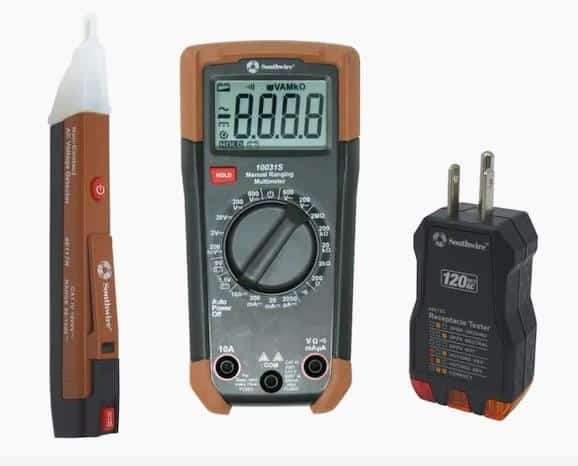Don't use a Non-Contact Tester on 12 volts DC
Who shall test the testers? Learn how a tester works BEFORE troubleshooting!
Dear Readers,
Last year I had a reader who was having all sorts of electrical problems with his RV, including air conditioners tripping the circuit breaker on the pedestal, 3-way refrigerator not running, and a bunch of inside electrical outlets and lights that didn’t have power.
We eventually discovered that the 50-amp circuit breaker in the campground pedestal was arcing internally, causing it to overheat and shutting off one of the 120-volt legs. But as I was assisting with troubleshooting, I found that the reader was using a few test tools incorrectly, causing much confusion and adding days to sorting out the reason for the failure.
Rule #1: Always test your testers….
The first problem was caused by using a 12-volt circuit tester to check the fuses. Normally this would be a useful test. However, the reader didn’t realize that the bulb in the tester was burned out. So even though the fuses were good, he thought they were all bad. So he was pulling out all the fuses and swapping them around.
Of course, the possibility of all fuses burning out at the same time is pretty remote. And swapping unknown fuses around only causes more confusion and compounds the errors. So the first rule is to always confirm that your tester is actually working. In this case it’s as simple as putting this tester across your RV battery terminals. If it lights up, then you know the tester is working and the battery has at least some charge on it. If it’s not working and other lights in your RV are on, then your tester has failed, probably due to a burned out bulb in the earlier testers. Modern voltage testers generally use LED bulbs so they should never fail. However, you should still test all testers for proper operation first.
Rule #2: Don’t use a NCVT on 12-volt DC circuits
Next up, my reader attempted to use a Non-Contact Voltage Tester (NCVT) to check the fuses in circuit. Of course, that showed no voltage anywhere, causing even more troubleshooting confusion. And that’s because an NCVT can’t detect DC voltage, it only works on AC voltage.
For review, watch one of my videos on the proper use of a Non-Contact Voltage Tester by clicking HERE.
Since these testers work by listening for 60-Hz hum, and there’s no hum in a DC circuit, then they register nothing on a 12-volt DC fuse. So they only work on AC circuits.
Again, always check your tester first on a circuit that you know is live. So, turn on the Non-Contact Voltage Tester (NCVT) and see that it beeps and lights up normally in active mode. Then point it close to an outlet on the pedestal that’s powered up. You may have to poke it into the hot slot on the outlet if you’re using 90 to 1,000-volt NCVT. But if your tester doesn’t work on a known-live circuit, then the tester has failed, probably due to a dead battery. And remember, these are for testing 120-volt AC circuits only, not 12-volt DC circuits.
Rule #3: When you hear hoofbeats, think horses, not zebras…
The most important rule for troubleshooting any sort of failure is to look for the simplest explanation first. In the above example, the possibility of every single fuse in a load center blowing simultaneously is very remote. For very complex failures I often apply a logic principal called Occam's Razor which looks for the simplest explanation.
Same logic for the 120-volt AC side of the panel. If you have no AC power anywhere in the RV, then it’s extremely unlikely that every circuit breaker has failed at the same time. So look upstream at the Automatic Transfer Switch or twist-lock inlet or pedestal circuit breaker.
The key thing is to observe the failure and look for the simplest explanation. Multiple failures at the same time are possible, but unlikely. And always test your testers first to make sure you don’t go down the rabbit hole with incorrect data. Plus never swap unknown components around without a specific plan in place.
Rule #4: Always know how your testers work
Don’t buy a meter or tester of any sort and just throw it in the drawer for the first time you need it. Take out the manual and read up on basic operation. Always try it out on a few correctly operating circuits periodically so you know what to expect.
And if a meter or tester requires batteries, make sure you have a backup battery in your road kit, just in case. There are few things more frustrating than trying to troubleshoot an electrical failure while camped out in the middle of nowhere and your meter or NCVT has a dead battery.
Let’s play safe out there…. Mike








The rule for working on anything over 50 volts is test your meter first on a known live source, test the equipment that you are working on to see if it still has power, then test your meter again to make sure it’s still working. The process is called a live-dead-live test. This make sure that what ever you are using to test a circuit did not fail during before testing process
Hi Mike,
Are we due for the third installment on the Autoformer?
Thanks!